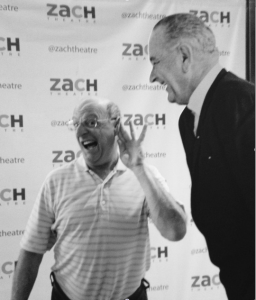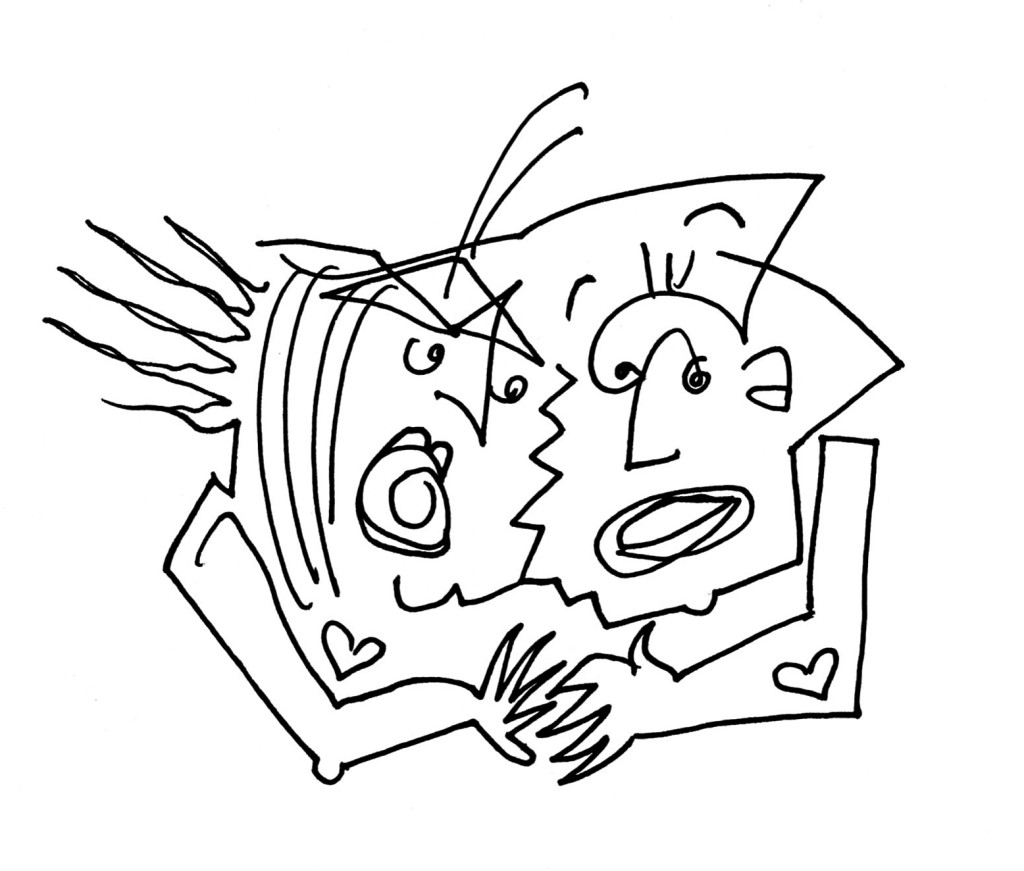When you listen better you think better; when you think better you do better.
Dr. Shana L. Redmond, USC Professor
By the other I don’t mean another device like the one this guy is wailing at.
I’m talking about another person. This is about being curious and listening louder.
As art forms go, listening is little studied, scarcely taught. It is the opposite of passive.
The Art of Conversation A Guided Tour of a Neglected Pleasure by Catherine Blyth
Recognizing the “other” is not as scary as it first appears. But to recognize and actually listen is easier than you might imagine.
“Look at that,” I said to a woman in a modern coffeehouse in San Diego. Written on the wall was, “A yawn is a scream for coffee.”
“Purple is a striking color on you,” I told someone at a Coffee Bean & Tea Leaf on Ventura Boulevard.
Next, I asked a man about his dog.
“What kind of mutt is that?”
No response. I remembered how sensitive people are about their pets.
“I mean mongrel,” I corrected myself. “ Sorry. What kind of mongrel is that?”
“No, that’s okay. He’s a rescue,” came the response, as it usually does.
Are you frustrated that sometimes the only conversation you get to overhear in cafes is, “Text me that,” or “I’ll call you with that.”
This patter is what passes for direct communication? (I know, at least we never hear, “Just fax it over,” anymore.)
And yes, it does save paper. Here’s another paper-saving technique: talk to each other.
In these modern times, conversational coffeehouses are everywhere.
Some of the best are:
* Operated by a church, featuring inspirational music and subsistence level pricing.
* University cafeterias, prices low and conversations loud, involving classes, Profs, arguments over New York bagels versus California bagels.
* Bowling alleys, the sound of crashing pins able to block out everyone else so you can stimulate inner conversation with yourself. Or just listen louder.
* Pizza parlors and other places featuring “groaning boards” – long, shareable tables where gentlemen sit sometimes, talking the morning away. (Fine for eating/eavesdropping; see my upcoming menu/memoir, Table For Three? for more on the subject)
Back Pocket Banter (things to know and ask as folk journalists)
What raised your curiosity today?
What’s the last thing you overheard?
What’s your go-to stimulating drink of choice?
We’re sitting in a coffeehouse. What can I learn from you?
Imagine engaging in a “battle of wits.” What happens?
Bonus
Starved for conversation after moving from NYC to LA, I made arrangements to meet up with two like-minded companeros who would pick a different coffeehouse — joints called Insomnia, Highland Grounds, or Open Latte — and set about holding weekly confabs about a current book or movie. For a couple of three hours, this was called “Nick Night,” because my friend Tip considered his friend Nick a special guest promising stimulating intellectual inquiry.
Nick got married, he and Shannon had a daughter and left Los Angeles to raise her right in Portland. Recently I visited him up there, not far from a branch of Powell’s Bookstore on Belmont, in a joint called Dick’s. There we continued where we left off. Sometimes you have to go a long way for good convo with a pal, or as Allen Ginsberg wrote in his 1955 poem “Howl,” someone, “who drove cross country seventy two hours to find out if I had a vision or you had a vision or he had a vision to find out Eternity.” *
Dr. Shana L. Redmond’s book Anthem: http://nyupress.org/books/9780814770412/
Catherine Blyth’s book: http://www.amazon.com/The-Art-Conversation-Neglected-Pleasure/dp/1592404979
Social media seems so easy; the whole point of its pleasure is its sense of casual familiarity. But we need a new art of conversation for the new conversations we are having—and the first rule of that art must be to remember that we are talking to human beings. Stephen Marche, “The Epidemic of Facelessness” NY Times February 15 2015



